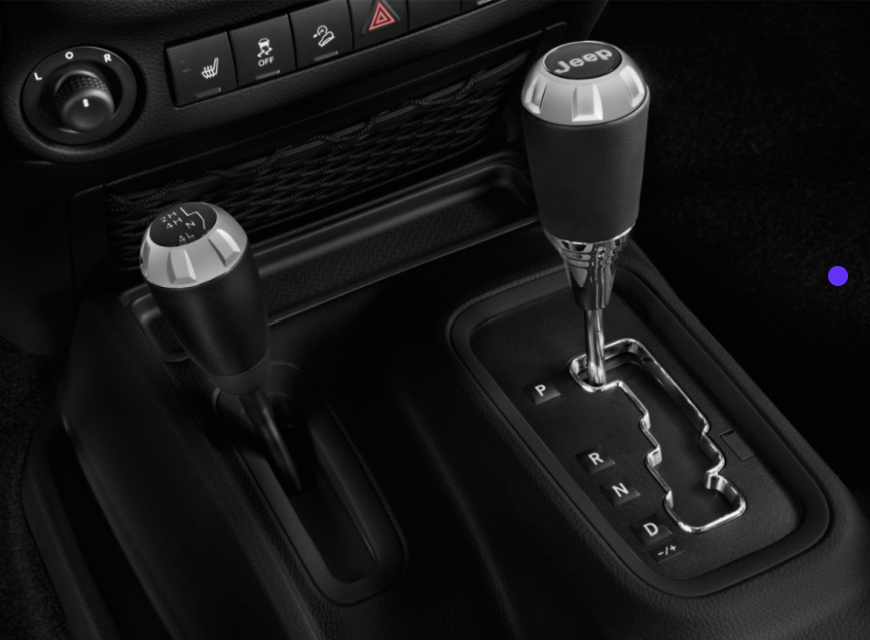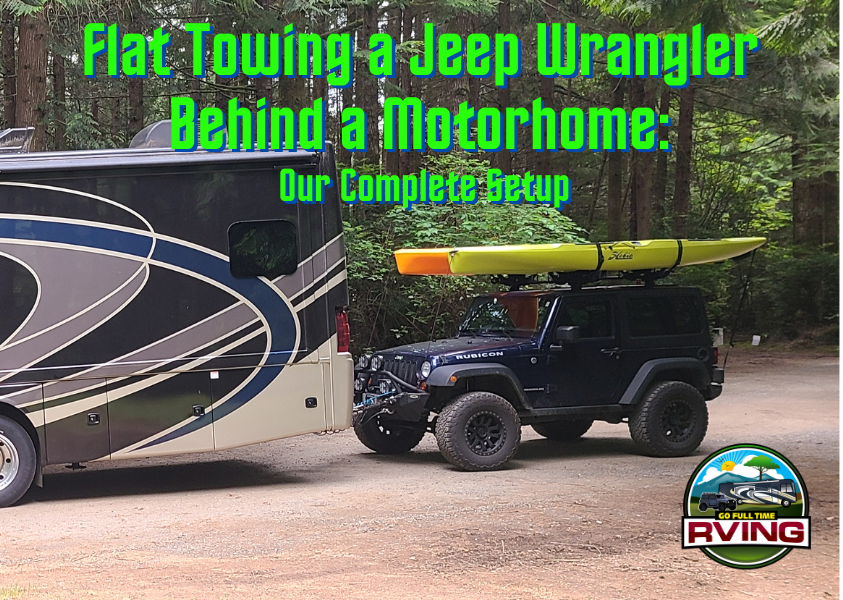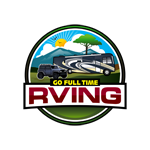When we first started our RV journey, we already owned a paid-off 2013 2-Door Jeep Wrangler Rubicon. We loved it and weren’t keen on trading it in to buy a truck that could tow a fifth wheel or travel trailer. That decision led us to purchase a Class A motorhome instead, and flat-towing a Jeep Wrangler behind it became our solution.
Let’s dive into how we made it happen, what equipment we used, and what we learned along the way.

This post contains affiliate links. As a participant in Amazon Associates and various affiliate programs, we are compensated when qualifying purchases are made through our referral links at no additional cost to you. Full Disclosure

Why the Jeep Wrangler is a Great TOAD
The Jeep Wrangler is one of the most popular flat-towable vehicles out there—and for good reason. It’s lightweight, rugged, and simple to set up for flat towing (also called four-down towing).
Other Jeep models that are flat tow-compatible include:
- Jeep Gladiator
- 4×4 versions of the Jeep Patriot and Liberty
- Certain trims of the Cherokee (with ActiveDrive II or a 2-speed PTU)
- Jeep Grand Cherokee models with 4-Low
Pro Tip: Always double-check your owner’s manual. Just because one year’s model is towable doesn’t mean the next one is.
Most Jeep models are compatible with tow bars from the popular brands, Blue Ox and Roadmaster, which is good because it’s important to find a reliable tow bar with a good track record.
When towing a Jeep Wrangler, avoid bumper-mounted clamp-on tow bars or risk doing severe damage to your Wrangler’s bumper. Of course, you’ll want to choose a tow bar that is not only compatible with your Jeep but also with your RV.
Flat-towing our Jeep was one of the most mentally stressful things for me when we started RVing. I would check and double-check everything for fear that I was hooking something up wrong or missing a step that would put our Jeep and the general public in harm’s way if something were to happen.
Before You Flat-Tow Your Vehicle
As with all vehicles, Jeep models vary from year to year. Just because your Jeep from the past could be flat-towed, it’s never safe to assume that the same model in a different year can be flat-towed as well. It never hurts to confirm the towing specifications for your Jeep before making a costly mistake.
Check the owner’s manual of your Jeep before flat towing to find out for sure whether or not it is safe to move it this way. The owner’s manual can also cue you into specific tips that will make flat-towing your vehicle more successful.
For instance, some models may require you to leave the keys in the ignition or disconnect certain fuses before flat towing. It’s always better to be safe than sorry, so take the time to educate yourself before setting up a tow.
Our Flat-Towing Setup for the Jeep Wrangler
1. Base Plate (or Not)
Most setups start with a base plate installed on the front of the vehicle. It connects the tow bar to the vehicle’s frame.
However, in our case, we already had a Smittybilt XRC front bumper. It’s welded to the frame and designed to be pulled on using D-ring mounts. That saved us the cost and installation of a separate base plate.
2. Tow Bar
We used the Blue Ox BX7445 Aventa LX, rated for 10,000 lbs. Although it’s now discontinued, Blue Ox continues to offer several solid options. Roadmaster is another top brand worth checking out.
3. Safety Cables
These are legally required in most states and act as a backup in case the tow bar fails. They should be crossed under the tow bar in an “X” pattern when hooked up.
You can use:
- Safety cables – heavy-duty braided steel with vinyl coating
- Safety chains – traditional metal-link chains
We chose high-quality safety cables for a clean, reliable setup.
4. Lighting System
You’ll need functioning brake lights, turn signals, and running lights on your towed vehicle.
There are three main options:
- Permanent wired – What we use. Ties into the Jeep’s light system using a 7-to-6 pin umbilical cord.
- Non-permanent wired – External magnetic lights with visible wires.
- Wireless magnetic lights – No wiring, quick to install.
We recommend a 6-pin connector on the Jeep side to give you more flexibility for future accessories like trailer brakes or a charge line.

5. Supplemental Braking System
This is one of the most important safety features. It reduces stopping distance, prevents wear on your RV brakes, and is required by law in most states.
We use the Demco Stay-In-Play DUO. It’s designed for gas-powered coaches with hydraulic brakes. It’s always installed, easy to engage, and reliable.
If you have a diesel pusher with air brakes, check out the Demco Air Force One system instead.
Our Hook-Up Procedure (Step-by-Step)
Hooking up the Jeep Wrangler for flat towing is a fairly simple and straightforward process.

Here’s how we hook up the Jeep for towing:

- Attach the tow bar to the Jeep and motorhome.


2. Connect the umbilical cord for lights.

3. Hook up safety cables in a crossed pattern.


4. Connect the breakaway cable. This activates the Jeep brakes in the event of a breakaway.

5. Shift the Jeep into neutral (see instructions below).

6. Turn on the Stay-In-Play DUO and adjust sensitivity.

7. Test all lights and brakes.
8. Hit the road!
How to Shift a Jeep Wrangler into Neutral (for Flat-Towing)
Applies to our 2013 Jeep Wrangler Rubicon. Your steps may vary. Always consult your owner’s manual.

To Shift Into Neutral:
- Set the parking brake.
- Turn the key to the Accessory position.
- Press the brake pedal.
- Shift the transmission to Neutral (or depress the clutch).
- Shift the transfer case to Neutral.
- Start the engine.
- Shift transmission into Drive (or engage the clutch).
- Release the brake to ensure there’s no movement.
- Turn off the engine and place the ignition in the unlocked OFF position.
- Shift transmission to Park (automatic only).
- Release the parking brake once attached to the RV.
Caution: Never leave the engine running with the transmission in Park and the transfer case in Neutral. This could damage the transmission.
To Shift Out of Neutral:
- Set the parking brake.
- Press brake/clutch.
- Shift the transfer case back into 2-Hi (or 4-Hi/4-Lo as needed).
- Shift transmission into Drive or release the clutch.
- Drive off!

🛑 Recommended TOAD Braking System
Looking for a reliable, permanent braking solution for your towed vehicle? We’ve used the Demco Stay-In-Play DUO on both our Jeep Wrangler and now our 2023 Ford Bronco — and it’s been rock solid.
- No setup each trip — just flip a switch and tow
- Fully automatic and vacuum-assisted
- Perfect for RVers towing a Jeep, Bronco, or similar
As an Amazon Associate, we earn from qualifying purchases.
Final Thoughts: Is Flat-Towing Worth It?
Flat towing was one of the most nerve-racking parts of RVing for me when we started out. I triple-checked everything until I was confident in the setup. But over time, the process became second nature.
Bonus Tip:
Keep an eye on your Jeep while driving using your RV’s rear camera. Consider a tire pressure monitoring system (TPMS) and braking monitor for extra peace of mind.
Disclaimer
This post reflects how we set up our 2013 Jeep Wrangler Rubicon for flat towing. Every vehicle and setup is different. Always check your owner’s manual and consult a professional before installing towing equipment.
We’d Love to Hear From You
Do you flat tow a Jeep or another vehicle behind your motorhome? Have questions about towing setups or need help choosing equipment? Drop a comment below—we’d love to chat!
If you’re looking to build your own home-based business like we have with this webpage, check out Wealthy Affiliate.
Wealthy Affiliate is an all-in-one platform that you can build your whole affiliate marketing business on. It combines training, software, and website hosting into one. This makes the whole process of starting an online business from scratch much easier, especially if you’re new to building a website.









